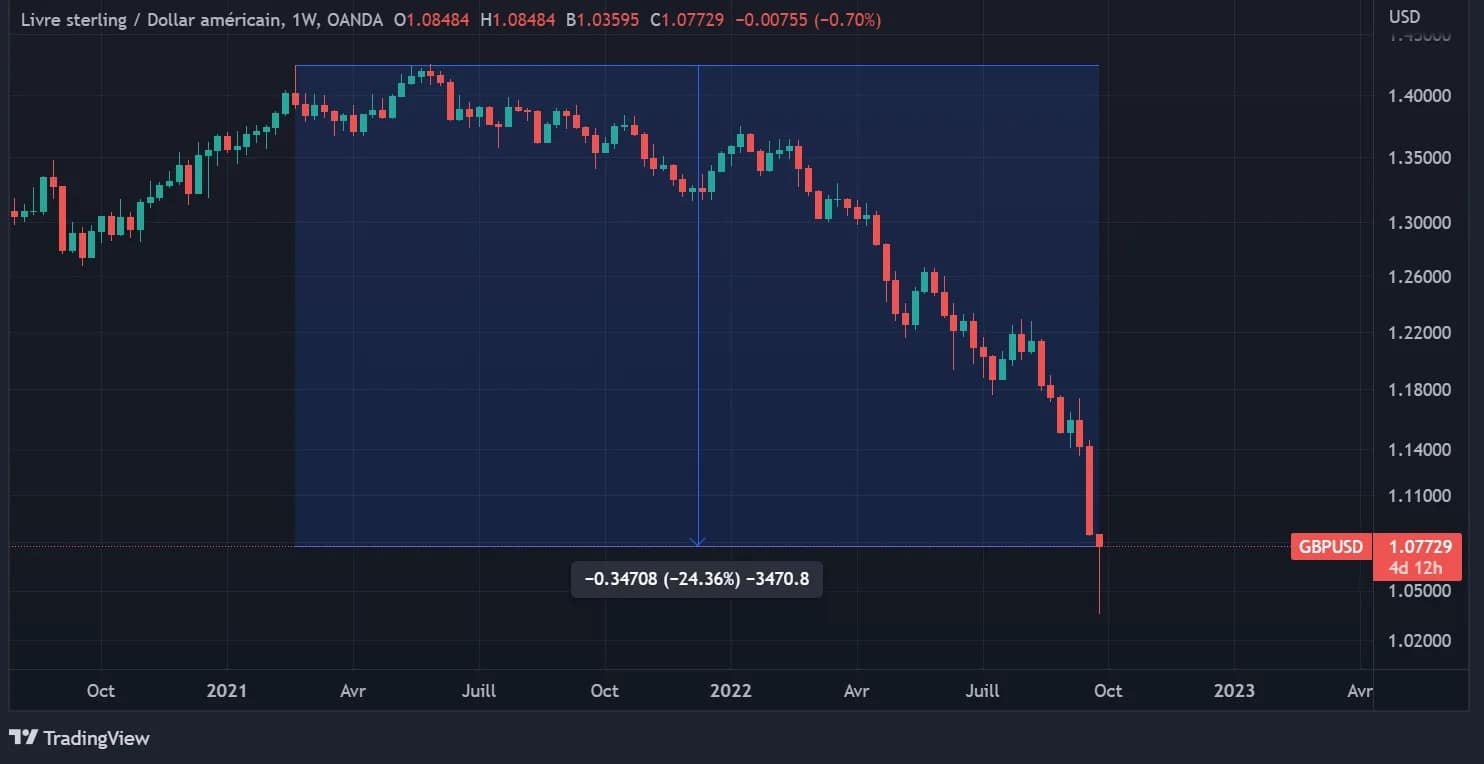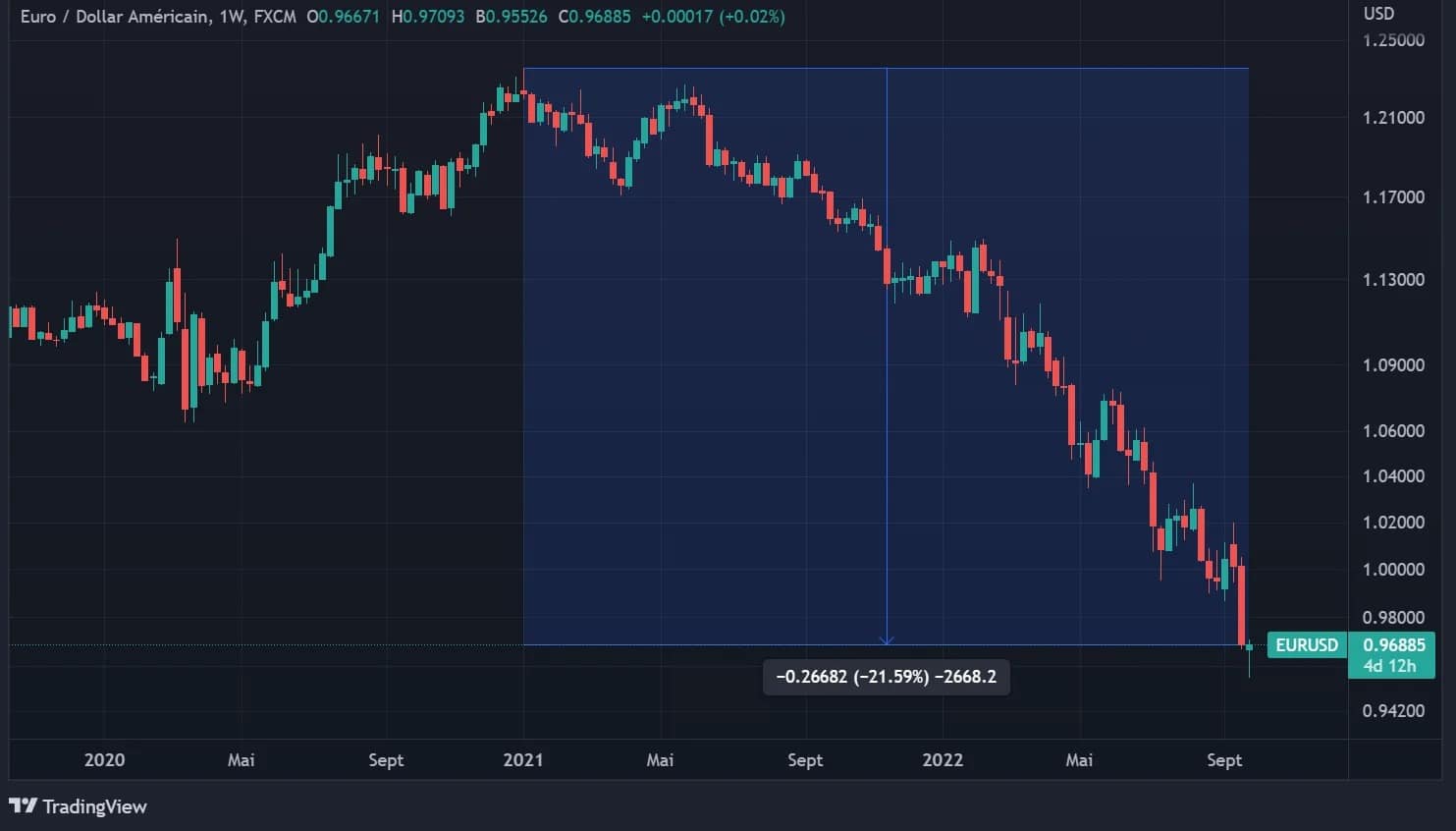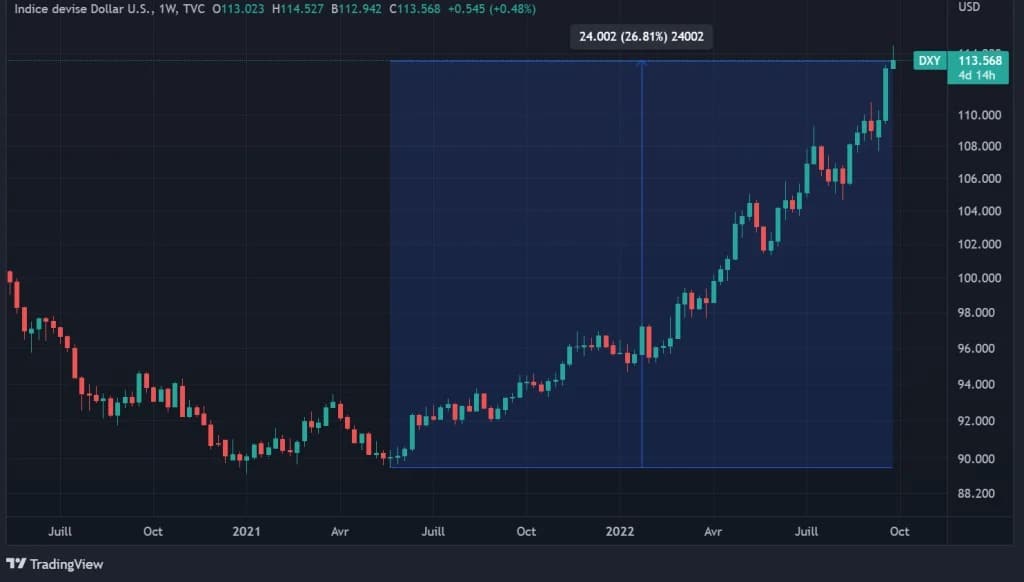Since the beginning of the year, the British pound has lost more than 24% against the dollar, and the euro has lost more than 21.5%. As these currencies depreciate, it may be worthwhile to diversify into dollar-indexed stablecoins.
The dollar is leading the way against the pound and the euro
It’s not news to anyone interested in global economic news that the dollar has been outperforming other currencies such as the euro and the pound since the beginning of the year.
During the Asian session last night, the pound hit an all-time low of $1.035 before recovering. Since January, it is clear that the GBP/USD pair is down more than 24% at the time of writing:

Figure 1: Pound falling against the dollar
The euro is not much better. The euro has lost about 21.5% against the dollar since January:

Figure 2: Euro falling against the dollar
There are many reasons for this, from the war in Ukraine to soaring inflation. On Friday, the British government announced tax cuts and incentives to encourage investment in the economy. It is these measures, in particular, that are believed to have contributed to the decline in the pound.
Central banks around the world are raising interest rates in an attempt to curb this inflation.
In the midst of all this, the DXY, which is an index of the dollar’s performance against a basket of currencies, has risen by almost 27% since May:

Figure 3: DXY rate
Dollar-indexed stablecoins as a protection solution
Of course, it is important to note that past performance is no indication of future performance. For example, the euro and the pound sterling may well be at low points against the dollar at the moment, and then rise again.
But it’s important to be aware of protection against the loss of value of your currency.
In the cryptocurrency ecosystem, if you think that the euro will fall further, then it may be appropriate to buy dollars through stablecoins such as USDT, DAI or USDC, among others.
Taking an example where the euro and the dollar are at parity, and then the euro falls to the point where you can buy 1.10 euros with one dollar, we would have gained 10% just by staying in stablecoin dollars.
There are also more complex methods through decentralised finance (DeFi). For example, with the Aave lending and borrowing protocol, it is possible to borrow euro-backed stablecoins such as jEUR or agEUR on the Polygon (MATIC) network.
After borrowing, these assets should be exchanged for dollar stablecoins. If the value of the euro decreases, then the value of our debt will also decrease, because it will depend on the dollar.
When we want to end the process, we can simply exchange these stablecoins again to repay the loan. We will then be left with a capital gain, as fewer dollars will have been needed to pay back the euros. The opposite manipulation is possible if, on the other hand, we believe that the euro will rise against the dollar.
Nevertheless, one should be very careful with these strategies and respect one’s own risk policy, as the markets often tend to be contrarian.
